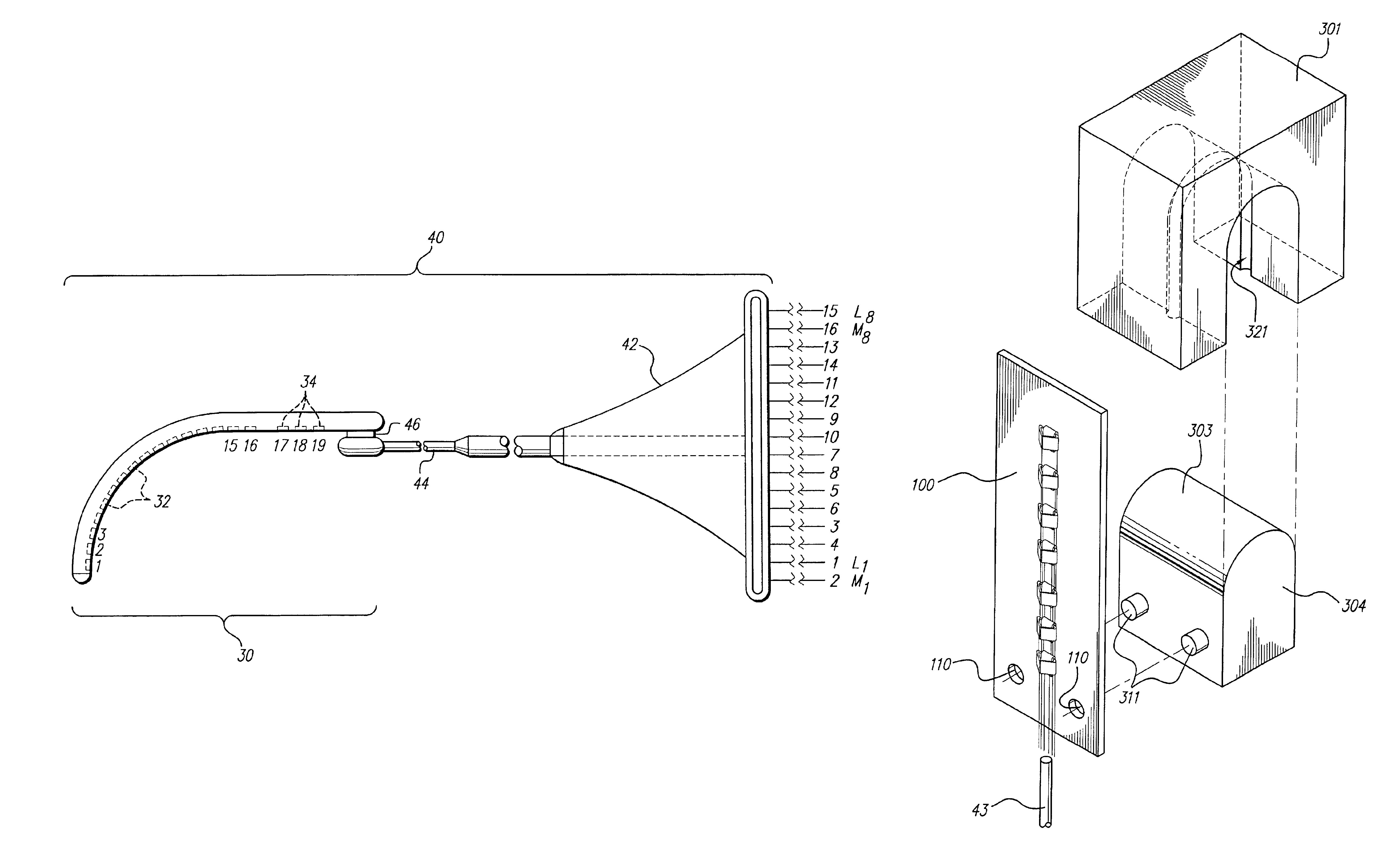Method of making a cochlear electrode array having current-focusing and tissue-treating features
a cochlear electrode and tissue treatment technology, applied in the field of electro-electrode arrays, can solve the problems of conductive hearing loss, impeded normal mechanical pathways for sound to reach the hair cells in the cochlea, and deafness sensorineural hearing loss, and achieve the effects of promoting tissue healing, low cost, and easy insertion into the cochlea
- Summary
- Abstract
- Description
- Claims
- Application Information
AI Technical Summary
Benefits of technology
Problems solved by technology
Method used
Image
Examples
Embodiment Construction
The following description is of the best mode presently contemplated for carrying out the invention. This description is not to be taken in a limiting sense, but is made merely for the purpose of describing the general principles of the invention. The scope of the invention should be determined with reference to the claims.
It is to be understood that the teachings of the invention relating to providing current-focusing and tissue-treating features of a cochlear electrode array may be used with almost any type of cochlear electrode array, as well as many other types of implantable electrode arrays, e.g,. spinal column electrode arrays. The invention, however, will be described in connection with a description of the preferred cochlear electrode array, e.g., a modiolus-hugging, cochlear electrode array having its electrode contacts positioned on a medial side of the array.
The invention described herein teaches a particular type of implantable electrode array having multiple, electrode...
PUM
| Property | Measurement | Unit |
|---|---|---|
| depth | aaaaa | aaaaa |
| distance L4 | aaaaa | aaaaa |
| length L9 | aaaaa | aaaaa |
Abstract
Description
Claims
Application Information
 Login to View More
Login to View More - R&D
- Intellectual Property
- Life Sciences
- Materials
- Tech Scout
- Unparalleled Data Quality
- Higher Quality Content
- 60% Fewer Hallucinations
Browse by: Latest US Patents, China's latest patents, Technical Efficacy Thesaurus, Application Domain, Technology Topic, Popular Technical Reports.
© 2025 PatSnap. All rights reserved.Legal|Privacy policy|Modern Slavery Act Transparency Statement|Sitemap|About US| Contact US: help@patsnap.com



